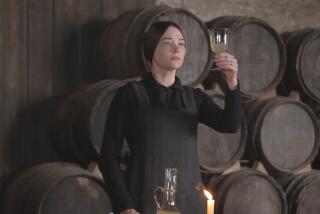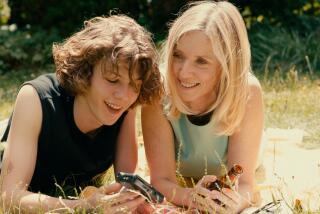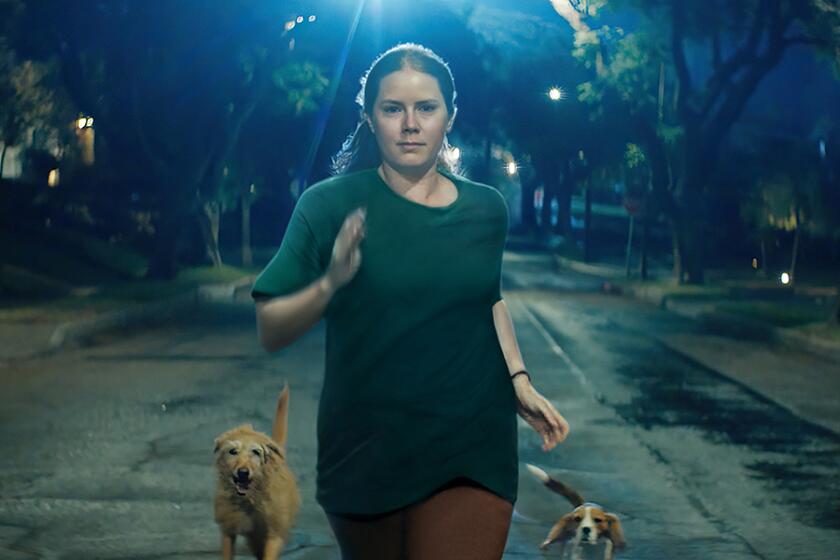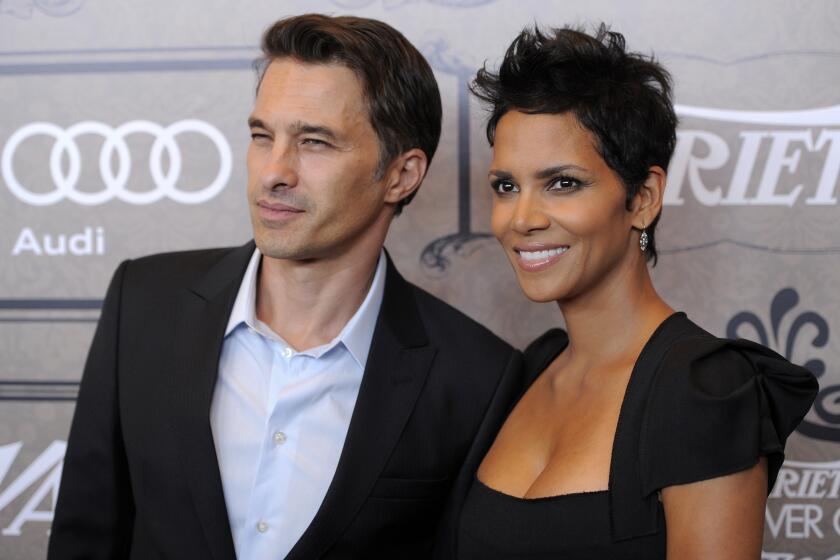‘Madame Bovary’ returns to speak to modern condition in two distinct films
It would seem unlikely that a story about a 19th century young French woman escaping her marriage and tedious provincial life by embarking on scandalous affairs would have much appeal to 21st century audiences.
But in this case the woman in question is Gustave Flaubert’s flawed but fascinating Madame Bovary, and she is the subject of two new movies that deal with her fictional life in very different ways.
Emma Bovary may not have the woman-warrior appeal of a Katniss Everdeen or the aspirational drive of Peggy Olson, but her character still speaks to modern audiences, noted Sophie Barthes, whose version of “Madame Bovary” starring Mia Wasikowska opens June 12.
CLASSIC HOLLYWOOD: Sign up for our weekly movies newsletter
Emma’s self-destructive pattern of desiring the inaccessible and the “permanent dissatisfaction with your plight is a very modern syndrome,” said Barthes. “Flaubert captured this at the birth of capitalism. The book is not aging, in a way, because each character has flaws that are still prevalent in society. It’s about human nature and the human condition.”
The other Madame Bovary movie, “Gemma Bovery,” based on British author Posy Simmonds’ graphic novel inspired by Flaubert, opened last Friday to generally strong reviews. It’s directed by French filmmaker Anne Fontaine, who liked the British writer Simmonds’ more comedic envisioning of the Flaubert tale.
Both Fontaine and Barthes believe the reason for the “Bovary” renaissance is simple: The story is relatable to contemporary audiences.
“I think everybody has something inside of him or her of this character,” said Fontaine, who previously directed “Coco Before Chanel.” “She is waiting for something more intense, something deeper.”
What has changed, Barthes noted, is the “female condition. I think Flaubert had a very strong feminine sensibility. I think he felt for women at that time who couldn’t work, couldn’t divorce and are trapped for life.”
Barthes said the women in Flaubert’s world “would be highly educated, and then they would have nothing to do with this education. They would just be married.”
Madame Bovary has a rich screen history, including movie versions by such auteurs as Jean Renoir, Vincente Minnelli and Claude Chabrol, who brought “Madame Bovary” to the silver screen. For Barthes, those earlier films were intimidating.
“I didn’t write the original version of the script,” said Barthes. “I got it from my agency. My first reaction was I’m not touching this. I remember thinking this is ridiculous — Renoir, Minnelli and Chabrol have made versions. But then I was really curious to see how it was adapted and the angle. Then I started reading it just out of curiosity, and I really liked it.”
“Gemma Bovery” stars Gemma Arterton, who starred in the 2010 adaptation of Simmonds’ “Tamara Drewe,” as a beautiful young British woman who arrives in a small village in Normandy — the location of “Madame Bovary” — with her older husband (Jason Flemyng), a furniture restorer.
She quickly comes to the attention of her neighbor (Fabrice Luchini), the local baker and Flaubert fanatic, who becomes obsessed with his charming neighbor. But it doesn’t take long before life imitates Flaubert as Gemma becomes bored with her marriage and embarks on an affair.
Simmonds, said Arterton, “has a real talent for taking those classic novels that are always so romantic with big emotions, big story and big language and sort of simplifies it and puts in a lot of humor in it and cheekiness.”
Gemma is a far different protagonist than Emma. “I think in ‘Madame Bovary,’ she is not the most sympathetic character,” said Arterton, who moved to Paris to learn French before production began. “I think the great thing about this adaptation of the story is making her English and a little bit wide-eyed. I wanted you to find her charming and warm.”
Finding the right actress to play Emma was pivotal for Barthes.
“With Mia, I saw all of her work,” said the director. “She was 23 when she did this. She is extremely mature. Mia is someone who has a very strong inner life. She’s a bit of an old soul.”
“Madame Bovary” was a family affair for Barthes. Her husband, Andrij Parekh, was the film’s cinematographer.
“We love visual art and painting,” said Barthes. “This was an aesthetic adventure together. We shot everything in the south of Normandy. When I first went to the region, I fell in love with the country. Then I went back every season to see how the light was changing. There are a lot of painters who come from that region. And you understand why when you spend time here.”
Barthes’ “Madame Bovary” presents an Emma who is very young, fresh out of convent school and trapped in a loveless marriage with the well-meaning but boring Charles. “In the Chabrol version, she is a much more mature person,” said Barthes.
Emma, she reflects, is a “very complex character. What we are trying to do is not make her a victim. What she wants is unattainable.”
More to Read
Only good movies
Get the Indie Focus newsletter, Mark Olsen's weekly guide to the world of cinema.
You may occasionally receive promotional content from the Los Angeles Times.











